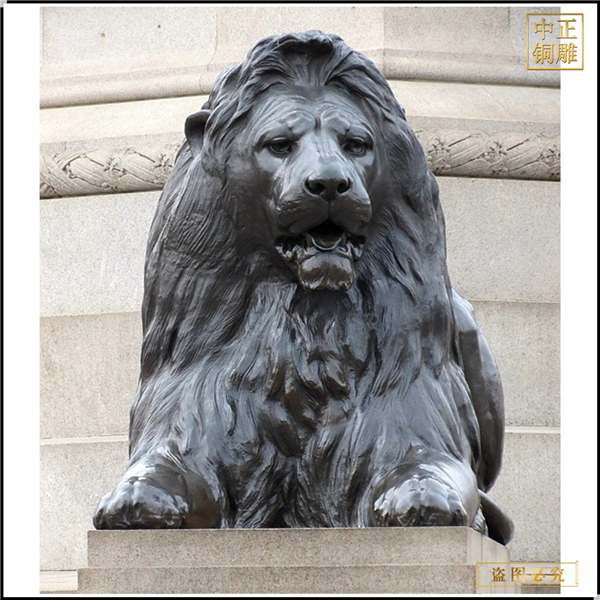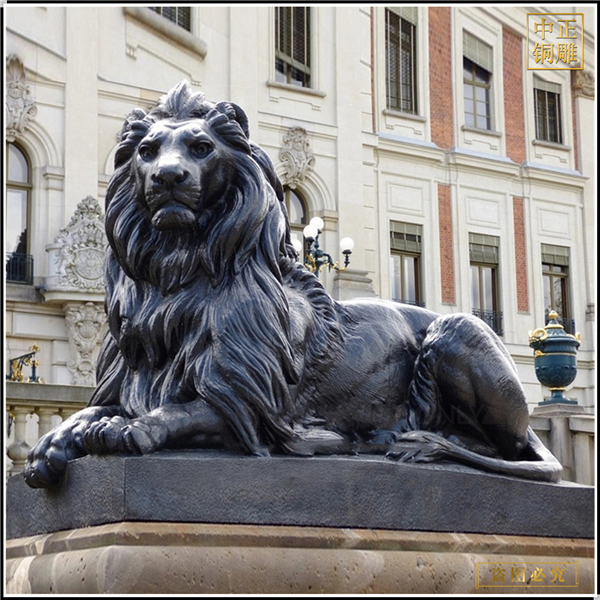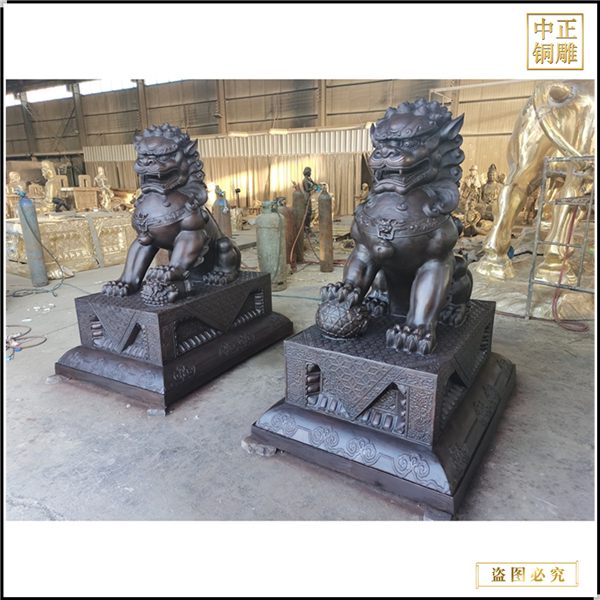中國沒有獅子,那獅子雕塑是怎么來的
獅子一直是守護人們吉祥、平安的象征。民間看重一個開光儀式,人們認為:石獅不開光點眼只是一個工藝品,開光后才是護國鎮邦之寶。所以安放銅獅子雕塑必須選擇吉日吉時,請宗教人士或風水先生進行開光,以求前景美好,萬事如意。
The lion has always been a symbol of good luck and peace. People value an opening ceremony. People believe that the stone lion is only a handicraft without opening its eyes. After opening, it is the treasure of protecting the country and the country. Therefore, the lion sculpture must be placed on an auspicious day and at an auspicious time. Religious figures or Mr. Feng Shui should be invited to light it up in order to have a bright future and all the best.

銅獅子雕塑的擺放也有規矩,成對稱性,位置與我國男左女右的習俗相同。即當人走出大門時,雄獅安放在人的左側,而雌獅則是在人的右側。有些建筑物大門里外都有一對獅子的話,它擺放的方向也是同樣的,這符合人們的審美觀。
The bronze lion sculpture is also placed in a symmetrical manner, which is the same as the custom of men left and women right in China. That is, when a person walks out of the gate, the male lion is placed on the left side of the person, while the female lion is on the right side of the person. If there are a pair of lions inside and outside the gates of some buildings, they are placed in the same direction, which is in line with people's aesthetics.

中國沒有獅子,所以神化了它的威力及形象。中國人認為狻猊愛好煙火,故立于香爐兩側;又說它好坐,所以不妨讓它坐在寺廟門口。寺廟或衙署的門前通常都置放石獅一對,左邊是雄獅,右邊是雌獅。雄獅前腳踩著繡球或撥弄雙錢;雌獅獅前腳和小獅戲耍,搖頭擺尾,歡迎訪客。
China has no lion, so it has deified its power and image. The Chinese believe that the lion dragon likes fireworks, so it stands on both sides of the incense burner; He said it's easy to sit, so you might as well let it sit at the gate of the temple. A pair of stone lions are usually placed in front of the gate of a temple or government office, with a male lion on the left and a female lion on the right. The male lion steps on the hydrangea or fiddles with two coins on his front foot; The female lion plays with the little lion with her front feet and wags her head and tail to welcome visitors.

獅子也被認為具有辟邪的效用,這可能與漢魏六朝盛行辟邪趨福有關。南朝的貴族墓前有一種「翼獅」,這種肩上長著翅膀的獅子,在古代埃及及西亞諸國很普遍,人們將它安置在陵墓前,以守護地下的亡魂。
Lions are also considered to have the effect of warding off evil spirits, which may be related to the prevalence of warding off evil spirits and seeking happiness in the Han, Wei and six dynasties. There was a kind of "winged lion" in front of the noble tombs of the Southern Dynasty. This kind of lion with wings on its shoulders was very common in ancient Egypt and Western Asian countries. People placed it in front of the tombs to protect the dead souls underground.




